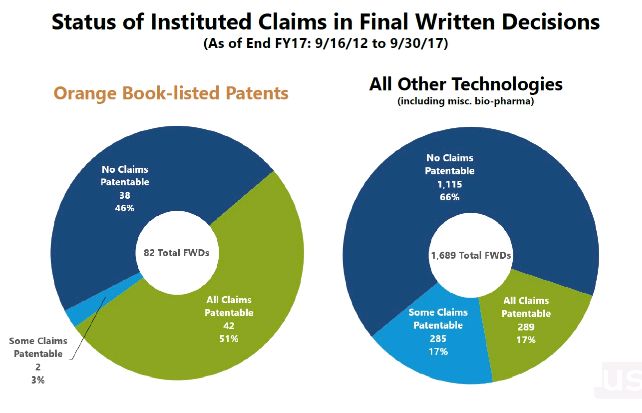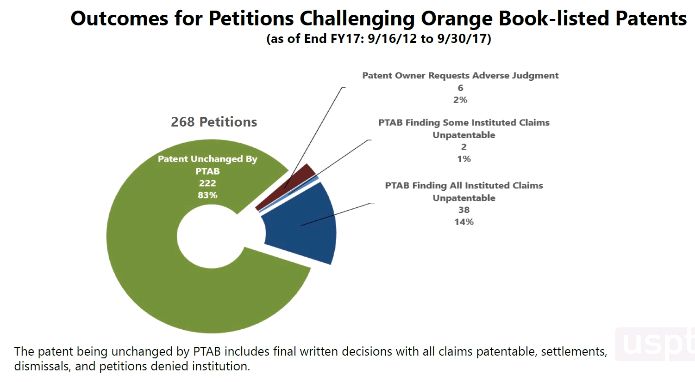In connection with a recent "Chat with the Chief" webinar, the Patent Trials and Appeal Board ("PTAB") released two studies – a study of expanded panels and a study of proceedings challenging orange book-listed patents.1 Practitioners may find value in reviewing these studies and the conclusions drawn by the PTAB.
As to expanded panels, the PTAB study sought to answer four questions: (1) How common are expanded panels?, (2) When were panels expanded?, (3) Why were panels expanded?, and (4) What was the result of the expansion if on rehearing? In studying these questions, the PTAB confirmed that expanded panels are rare, and that expanded panel decisions are usually issued as original decisions and not decisions on rehearing. As for why panels were expanded, the PTAB notes that "[p]anels were expanded for guidance and consistency" – i.e. "to provide forward-looking guidance on reoccurring issues" and/or "to treat similarly situated parties the same." Lastly, the PTAB concluded that the "underlying result remained the same after panel expansion on rehearing," save for two examples relating to same-party joinder issues. In answering these questions, the PTAB offers some statistics and categorizations that Practitioners may find informative, particularly when considering requesting an expanded panel or when facing an expanded panel.
As for the Orange Book-Listed Patents Study, it offers a number of interesting statistics starting from the beginning of AIA trials and from the last fiscal year. Notably, the PTAB highlighted the following:
- 83% of all petitions challenging Orange Book-listed patents result in patent being unchanged by PTAB
- The cumulative institution rate for Orange Book petitions (66%) is essentially the same as the cumulative overall institution rate (68%)
- Just over half of all final written decisions for petitions challenging Orange Book-listed patents find all claims patentable
- 80% of all challenged Orange Book-listed patents have 1 or 2 petitions, compared to 87% of all challenged patents
- 85% of all challenged Orange Book-listed patents have 1 or 2 petitioners, compared to 94% of all challenged patents
Statistics of particular note include filing trends for petitions challenging orange book-listed patents, which are shown by the following pie charts noting an overall percentage of 5% since the beginning of AIA trials and 4% during fiscal year 2017:


The study also presents the following statistics relating to the outcomes of challenges to orange book-listed patents, including statistics relating to final written decisions and overall outcomes since the beginning of AIA trials:


In sum, each of these studies provide objective information directly from the PTAB that Practitioners should consider in connection with expanded panels and challenges to orange book-listed patents. Additional observations regarding challenges to pharmaceutical patents can be found in an earlier study published on this blog. Given the emphasis on consistency by the PTAB, and the existing practice of publishing trial related statistics and other studies, it is expected the PTAB will continue publishing studies such as these in the future. Webinars and other study related information can be found on the "What's New" page.
Footnotes
1 Additional upcoming PTAB webinars include: Thursday, April 5, noon to 1 pm: Boardside Chat webinar on AIA Motion Practice; Thursday, June 7, noon to 1 pm: Boardside Chat webinar on Motions to Exclude and Motions to Strike; and Thursday, June 28, 9 to 5 pm: Judicial Conference.
The content of this article is intended to provide a general guide to the subject matter. Specialist advice should be sought about your specific circumstances.


